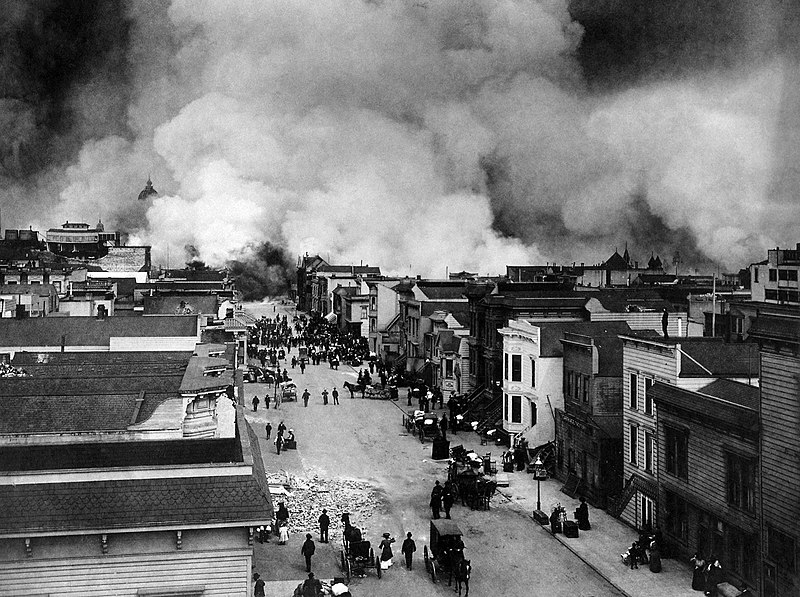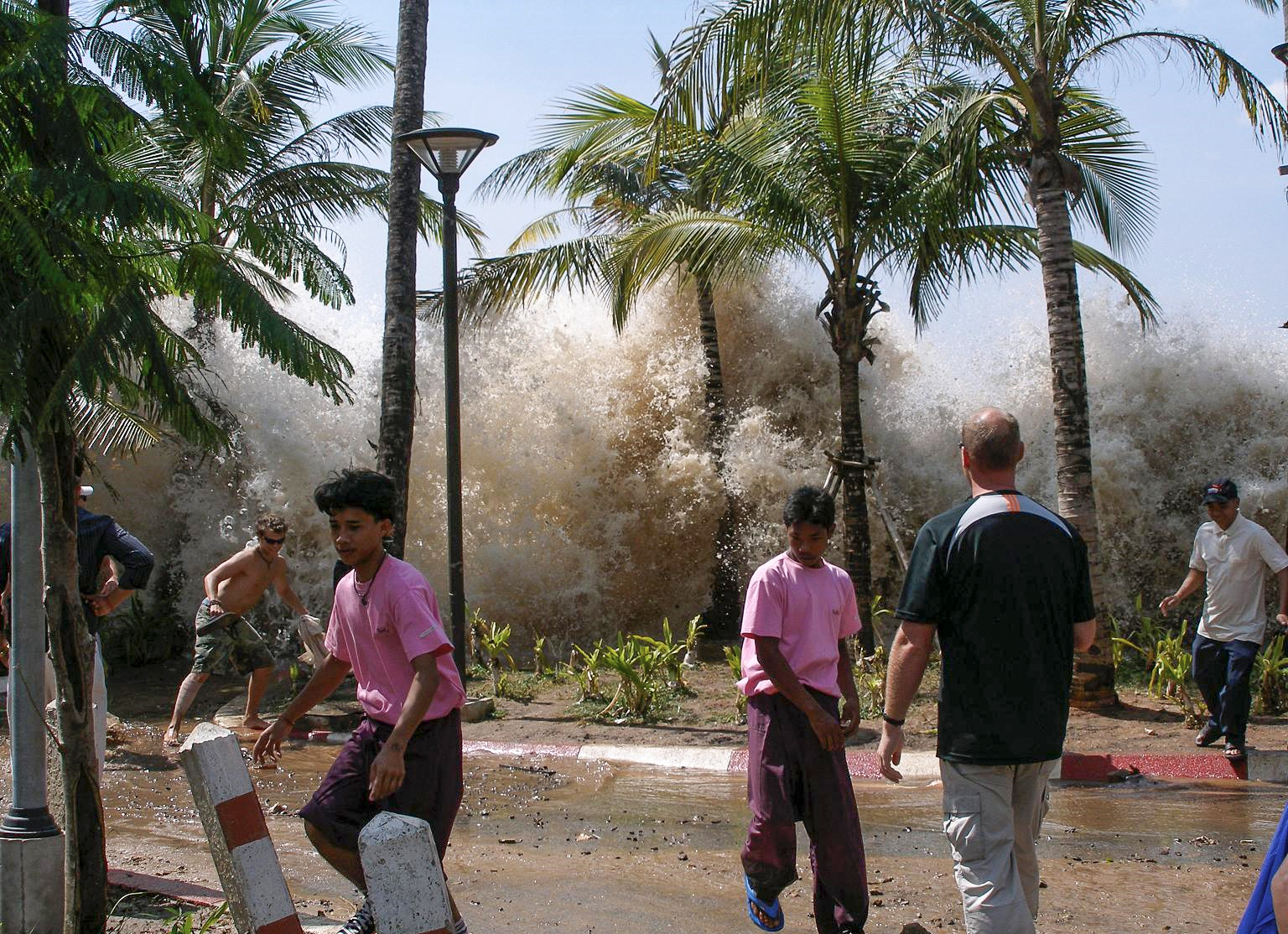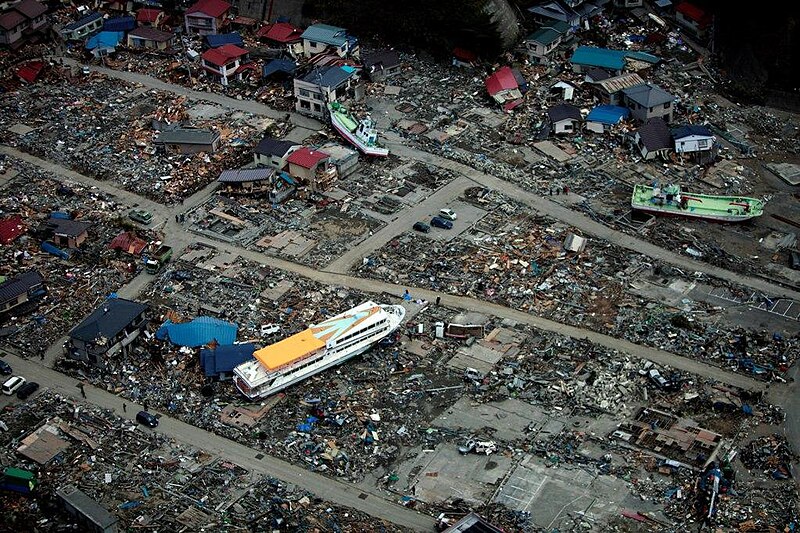Earthquake ( แผ่นดินไหว )

An
earthquake (also known as a quake , tremor or temblor ) is the result
of a sudden release of energy in the Earth's crust that creates seismic
waves.
Earthquakes are measured using observations from seismometers. The
moment magnitude is the most common scale on which earthquakes larger
than approximately 5 are reported for the entire globe. The
more numerous earthquakes smaller than magnitude 5 reported by national
seismological observatories are measured mostly on the local magnitude
scale, also referred to as the Richter scale.These two scales are numerically similar over their range of validity.Magnitude
3 or lower earthquakes are mostly almost imperceptible or weak and
magnitude 7 and over potentially cause serious damage over larger areas,
depending on their depth.The
largest earthquakes in historic times have been of magnitude slightly
over 9, although there is no limit to the possible magnitude.The
most recent large earthquake of magnitude 9.0 or larger was a 9.0
magnitude earthquake in Japan in 2011 (as of October 2012), and it was
the largest Japanese earthquake since records began.Intensity of shaking is measured on the modified Mercalli scale. The shallower an earthquake, the more damage to structures it causes, all else being equal. At the Earth's surface, earthquakes manifest themselves by shaking and sometimes displacement of the ground. When the epicenter of a large earthquake is located offshore, the seabed may be displaced sufficiently to cause a tsunami. Earthquakes can also trigger landslides, and occasionally volcanic activity.

Tectonic earthquakes occur anywhere in the earth where there is
sufficient stored elastic strain energy to drive fracture propagation
along a fault plane. The
sides of a fault move past each other smoothly and aseismically only if
there are no irregularities or asperities along the fault surface that
increase the frictional resistance. Most fault surfaces do have such asperities and this leads to a form of stick-slip behaviour. Once
the fault has locked, continued relative motion between the plates
leads to increasing stress and therefore, stored strain energy in the
volume around the fault surface. This
continues until the stress has risen sufficiently to break through the
asperity, suddenly allowing sliding over the locked portion of the
fault, releasing the stored energy. This
energy is released as a combination of radiated elastic strain seismic
waves , frictional heating of the fault surface, and cracking of the
rock, thus causing an earthquake.This
process of gradual build-up of strain and stress punctuated by
occasional sudden earthquake failure is referred to as the
elastic-rebound theory .It is estimated that only 10 percent or less of an earthquake's total energy is radiated as seismic energy.Most of the earthquake's energy is used to power the earthquake fracture growth or is converted into heat generated by friction.Therefore,
earthquakes lower the Earth's available elastic potential energy and
raise its temperature, though these changes are negligible compared to
the conductive and convective flow of heat out from the Earth's deep
interior.
Induced seismicity
While most earthquakes are caused by movement of the Earth's tectonic plates , human activity can also produce earthquakes.Four
main activities contribute to this phenomenon: storing large amounts of
water behind a dam (and possibly building an extremely heavy building
), drilling and injecting liquid into wells , and by coal mining and oil
drilling. Perhaps the best known example is the 2008 Sichuan earthquake
in China's Sichuan Province in May; this tremor resulted in 69,227
fatalities and is the 19th deadliest earthquake of all time.The
Zipingpu Dam is believed to have fluctuated the pressure of the fault
1,650 feet (503 m) away; this pressure probably increased the power of
the earthquake and accelerated the rate of movement for the fault.The
greatest earthquake in Australia's history is also claimed to be induced
by humanity, through coal mining. The city of Newcastle was built over a
large sector of coal mining areas.The
earthquake has been reported to be spawned from a fault that
reactivated due to the millions of tonnes of rock removed in the mining
process.
Effects of earthquakes
Shaking and ground rupture
Shaking
and ground rupture are the main effects created by earthquakes,
principally resulting in more or less severe damage to buildings and
other rigid structures.The
severity of the local effects depends on the complex combination of the
earthquake magnitude , the distance from the epicenter , and the local
geological and geomorphological conditions, which may amplify or reduce
wave propagation.The ground-shaking is measured by ground acceleration.Ground
rupture is a visible breaking and displacement of the Earth's surface
along the trace of the fault, which may be of the order of several
metres in the case of major earthquakes.Ground
rupture is a major risk for large engineering structures such as dams ,
bridges and nuclear power stations and requires careful mapping of
existing faults to identify any which are likely to break the ground
surface within the life of the structure.

Earthquakes, along with severe storms, volcanic activity, coastal
wave attack, and wildfires, can produce slope instability leading to
landslides, a major geological hazard.Landslide danger may persist while emergency personnel are attempting rescue.
Fires
Earthquakes can cause fires by damaging electrical power or gas lines.In
the event of water mains rupturing and a loss of pressure, it may also
become difficult to stop the spread of a fire once it has started.For example, more deaths in the 1906 San Francisco earthquake were caused by fire than by the earthquake itself.

Soil liquefaction
Soil liquefaction occurs when, because of the shaking, water-saturated granular material (such as sand) temporarily loses its strength and transforms from a solid to a liquid. Soil liquefaction may cause rigid structures, like buildings and bridges, to tilt or sink into the liquefied deposits. For example, in the 1964 Alaska earthquake, soil liquefaction caused many buildings to sink into the ground, eventually collapsing upon themselves.
Tsunami
Tsunamis are long-wavelength, long-period sea waves produced by
the sudden or abrupt movement of large volumes of water.In
the open ocean the distance between wave crests can surpass 100
kilometers (62 mi), and the wave periods can vary from five minutes to
one hour.Such tsunamis travel 600-800 kilometers per hour (373–497 miles per hour), depending on water depth.Large waves produced by an earthquake or a submarine landslide can overrun nearby coastal areas in a matter of minutes.Tsunamis
can also travel thousands of kilometers across open ocean and wreak
destruction on far shores hours after the earthquake that generated
them.

Human impacts
An
earthquake may cause injury and loss of life, road and bridge damage,
general property damage (which may or may not be covered by earthquake
insurance ), and collapse or destabilization (potentially leading to
future collapse) of buildings.The aftermath may bring disease , lack of basic necessities, and higher insurance premiums.

ไม่มีความคิดเห็น:
แสดงความคิดเห็น